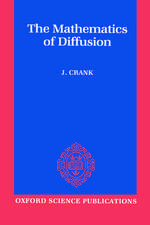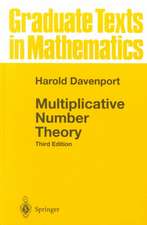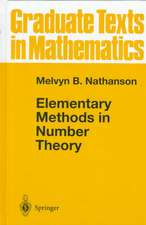Plane Elastic Systems: Ergebnisse der angewandten Mathematik, cartea 6
Autor Louis M. Milne-Thomsonen Limba Engleză Paperback – 1968
Din seria Ergebnisse der angewandten Mathematik
-
 Preț: 452.25 lei
Preț: 452.25 lei -
 Preț: 412.13 lei
Preț: 412.13 lei - 15%
 Preț: 435.77 lei
Preț: 435.77 lei -
 Preț: 411.75 lei
Preț: 411.75 lei -
 Preț: 348.77 lei
Preț: 348.77 lei -
 Preț: 381.43 lei
Preț: 381.43 lei -
 Preț: 386.22 lei
Preț: 386.22 lei
Preț: 385.62 lei
Nou
Puncte Express: 578
Preț estimativ în valută:
73.79€ • 80.40$ • 62.18£
73.79€ • 80.40$ • 62.18£
Carte tipărită la comandă
Livrare economică 23 aprilie-07 mai
Preluare comenzi: 021 569.72.76
Specificații
ISBN-13: 9783540040927
ISBN-10: 3540040927
Pagini: 220
Ilustrații: VIII, 211 p.
Dimensiuni: 170 x 244 x 12 mm
Greutate: 0.36 kg
Ediția:2nd ed. 1968
Editura: Springer Berlin, Heidelberg
Colecția Springer
Seria Ergebnisse der angewandten Mathematik
Locul publicării:Berlin, Heidelberg, Germany
ISBN-10: 3540040927
Pagini: 220
Ilustrații: VIII, 211 p.
Dimensiuni: 170 x 244 x 12 mm
Greutate: 0.36 kg
Ediția:2nd ed. 1968
Editura: Springer Berlin, Heidelberg
Colecția Springer
Seria Ergebnisse der angewandten Mathematik
Locul publicării:Berlin, Heidelberg, Germany
Public țintă
ResearchCuprins
I. The role of Airy’s stress function.- II. Complex stresses and their properties in the isotropic case.- III. Mathematical preliminaries to the boundary value problems.- IV. Planes and half-planes.- V. Circular Boundaries.- VI. Curvilinear boundaries.- VII. The influence of anisotropy.- References.












